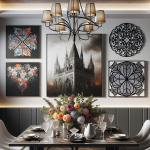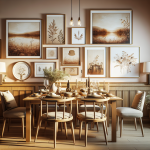Cartoons have been a beloved form of entertainment for generations. Their ability to convey a wide range of emotions and expressions adds depth and personality to each character. Whether it’s a mischievous grin, a look of surprise, or a furrowed brow, the facial expressions of a cartoon character can captivate audiences and bring the story to life. In this article, we’ll explore the art of adding expressions and emotions to your cartoon characters, and how you can bring them to life on the page or screen.
Understanding the Basics of Expressions and Emotions
Before diving into the technical aspects of adding expressions to your cartoon characters, it’s essential to understand the basics of facial expressions and emotions. Expressions are the outward manifestation of our emotions, conveying our feelings and inner thoughts to others. Our faces can communicate happiness, sadness, anger, surprise, and a myriad of other emotions through subtle changes in expression.
When it comes to cartoon characters, these same principles apply. By manipulating the features of a character’s face, such as the eyes, eyebrows, mouth, and overall posture, you can convey a wide range of emotions and bring your characters to life. Understanding how these expressions work in real life is crucial for accurately conveying them in your cartoons.
Tools and Techniques for Adding Expressions and Emotions
Now that we have a basic understanding of expressions and emotions, let’s explore the tools and techniques you can use to bring your cartoon characters to life.
Facial Features:
The first step to creating expressive cartoon characters is to master the manipulation of facial features. The eyes, eyebrows, and mouth are the key players in conveying emotions. Experiment with different shapes, sizes, and positions to create a range of expressions. For example, arched eyebrows and wide eyes can convey surprise, while a downturned mouth and narrowed eyes can show anger or frustration.
Body Language:
In addition to facial expressions, body language plays a crucial role in conveying emotions. The positioning of the body, the angle of the head, and the gesture of the hands can all work in tandem with facial expressions to enhance the emotional impact of your cartoon characters. Pay attention to the overall posture and movement of your characters to create a cohesive and expressive portrayal of emotions.
Color and Style:
The color palette and overall style of your cartoons can also contribute to the emotional impact of your characters. Bright, bold colors can convey a sense of energy and excitement, while muted tones can create a more subdued and contemplative mood. Experiment with different color schemes and artistic styles to find the perfect match for the emotions you want your characters to express.
Bringing Your Characters to Life
Adding expressions and emotions to your cartoon characters is a creative and rewarding process. By understanding the basics of facial expressions, mastering the manipulation of facial features, incorporating body language, and experimenting with color and style, you can create dynamic and compelling characters that resonate with your audience.
Remember to practice and experiment with different techniques to find the perfect expression for each of your characters. It’s this attention to detail and the ability to convey a range of emotions that will truly bring your cartoon characters to life.
FAQs
How can I make my cartoon characters’ expressions more realistic?
Focus on observing and understanding real-life expressions and emotions. Pay attention to how people’s faces and bodies move when they experience different feelings. Then, translate those observations into the features and body language of your cartoon characters.
What role does body language play in conveying emotions in cartoon characters?
Body language can enhance and amplify the emotions conveyed by a character’s facial expressions. By paying attention to the positioning of the body, the angle of the head, and the gesture of the hands, you can create a more nuanced and impactful portrayal of emotions in your cartoons.
How important is color and style in conveying emotions in cartoons?
Color and style can significantly contribute to the emotional impact of your characters. Experiment with different color palettes and artistic styles to find the perfect match for the emotions you want your characters to express. Bright, bold colors can convey energy and excitement, while subdued tones can create a more contemplative mood.
Adding expressions and emotions to your cartoon characters is a creative and rewarding process that requires attention to detail and a keen understanding of human emotions. By mastering the manipulation of facial features, incorporating body language, and experimenting with color and style, you can bring your characters to life and create a dynamic and compelling portrayal of emotions in your cartoons.







+ There are no comments
Add yours